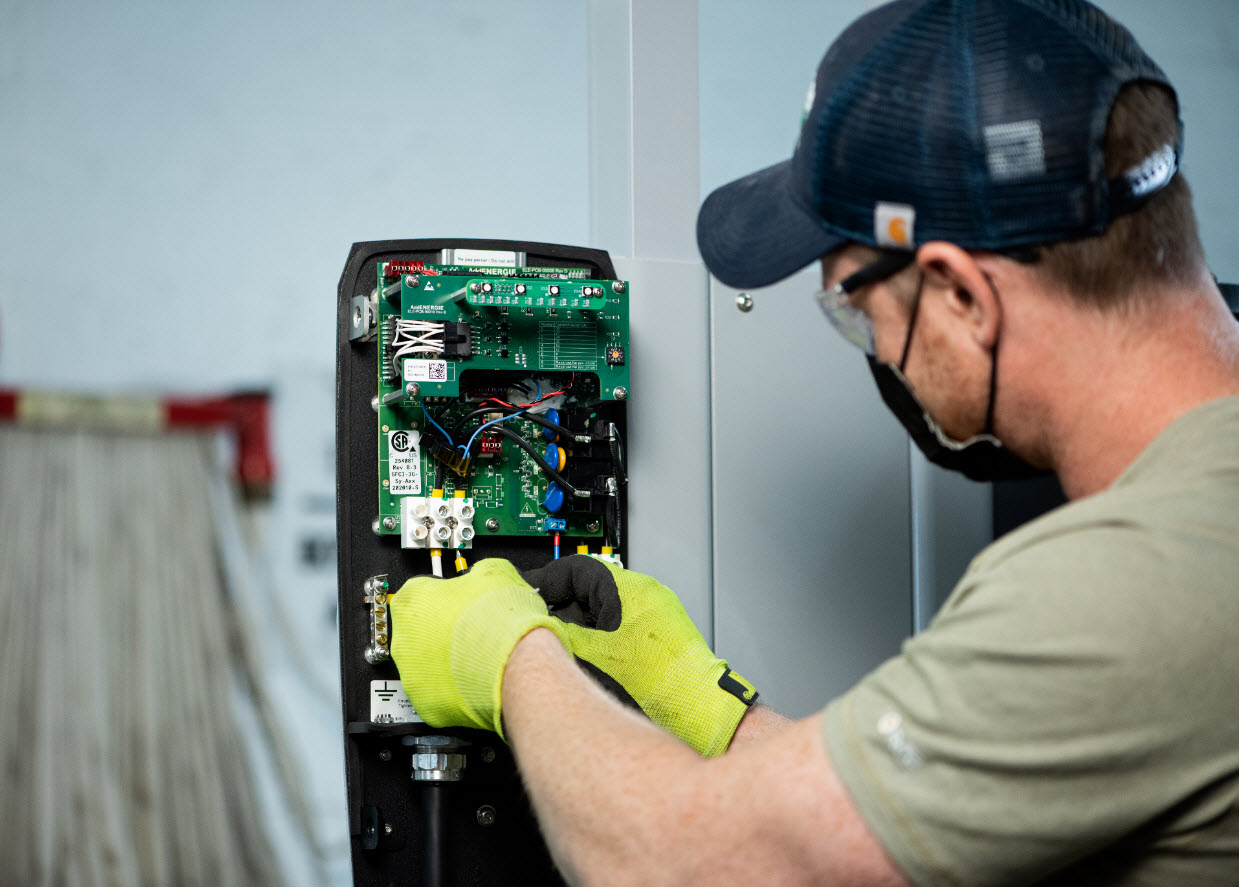EV Charging

Electric vehicles (EVs) are becoming a popular choice for drivers. By using electricity instead of gasoline, EVs significantly reduce greenhouse gas emissions and offer long-term savings with lower fuel and maintenance costs. Plus, thanks to advancements in technology, EVs now match the range capabilities of traditional gas vehicles.
Every EV comes with a cord that allows you to charge the vehicle’s battery using a regular wall socket, known as a Level 1 charger. For faster charging, you can install a Level 2 charging station.
Level 2 EV chargers require a 240-volt electrical supply, similar to what is used for large appliances like electric dryers or stoves. Installation involves hiring a qualified electrician to install a dedicated circuit and the charging station itself. You may also choose to install a charging station with Wi-Fi connectivity for remote monitoring and control.
Considering making the leap to electric? Click here to learn about incentives and loans available to you.
Learn more about EVs:
Learn all about EVs and book a free, no-pressure, test drive with EV Experience.
Compare the ongoing costs of gas, hybrid, and electric vehicles with CAA’s cost calculator.
Find your EV match with Plug‘n Drive.
Four EV charging tips to know before you buy a vehicle.



